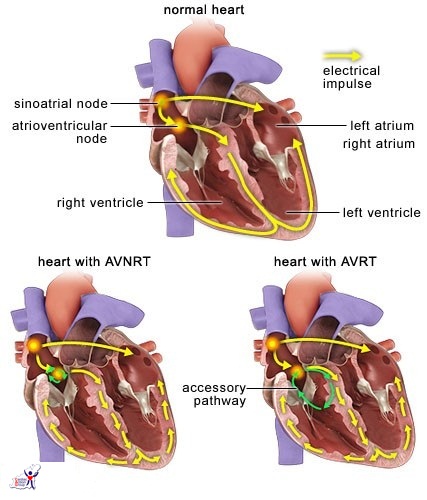SVT is a relatively common condition and often affects younger otherwise healthy people. It is usually due to an extra electrical connection between the top and the bottom chambers of the heart. These extra connections may be distinct from the normal wiring of the heart (Accessory pathway) or part of the normal conduction system itself (AVNRT). The two connections may ‘short circuit’ from time to time causing the heart to beat fast (between 150 and 250 times a minute).

Patients typically experience sudden onset palpitations which may last for minutes to hours. Because of the episodic nature of SVT, some of these patients are initially misdiagnosed as suffering from anxiety or panic attacks for many years. The condition can be controlled with drugs, but most patients prefer a one-off curative catheter ablation to life-long tablets. Results of catheter ablation are excellent (success rates greater than 90% for most types of SVT) with a small chance of complications (less than 2 percent overall). The most important risk from this procedure is the need for a permanent pacemaker due to damage of the heart’s own wiring but this is very rare (less than 1 percent). Ablation involves the use of heating energy to remove the ‘short circuit’ via a wire passed through the vein at the top of the leg. In most cases the procedure can be performed without the need for a general anaesthetic. Patients are on their feet following the procedure after a few hours and are discharged home the following day.
